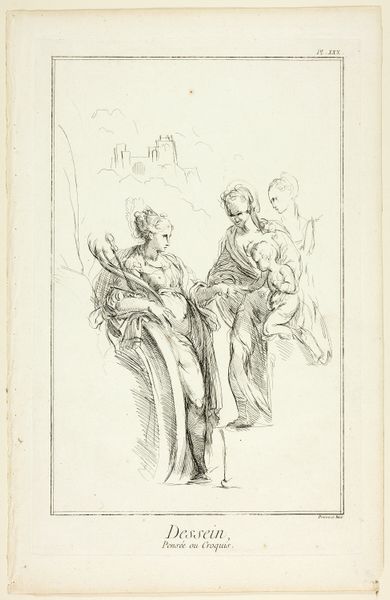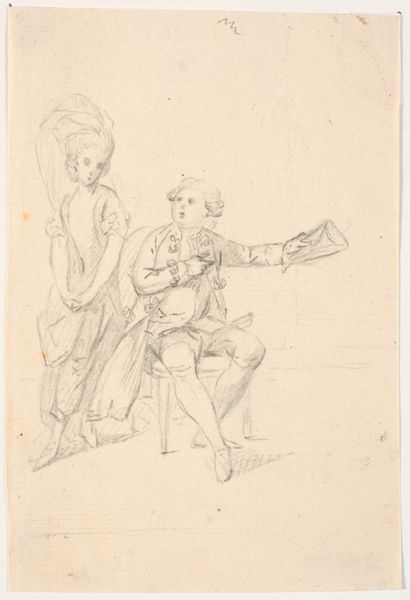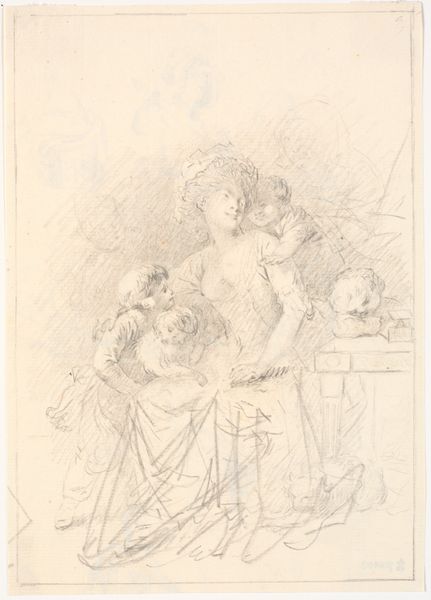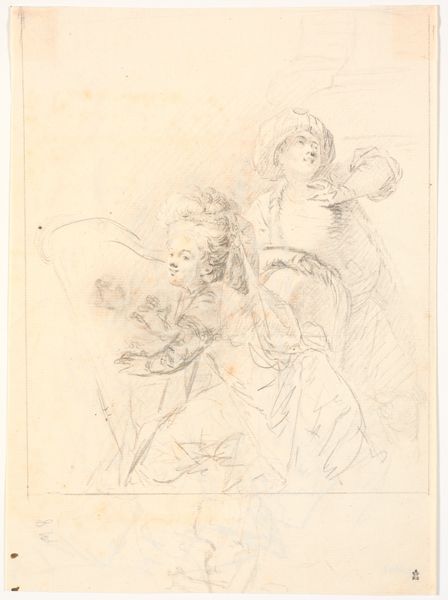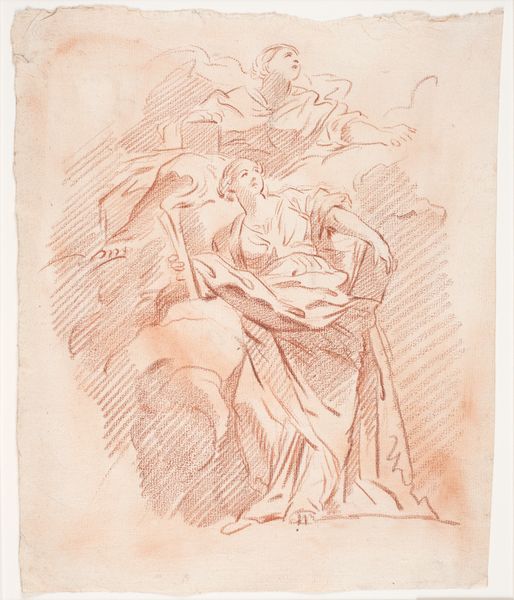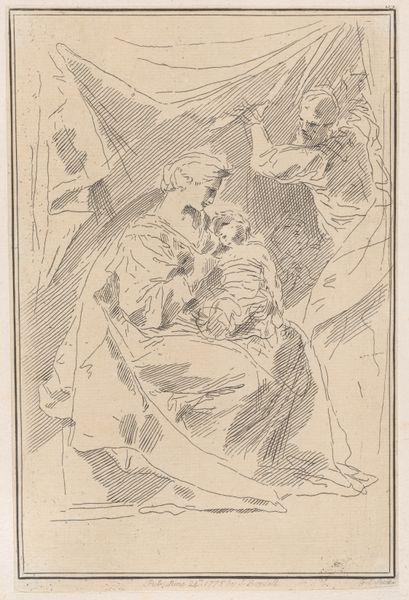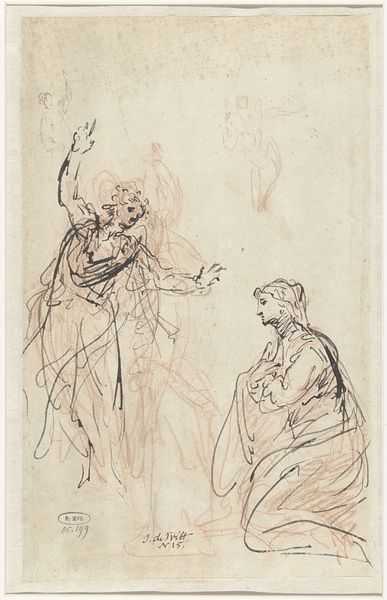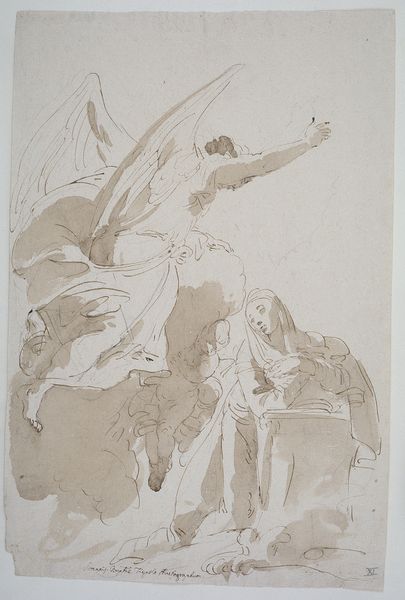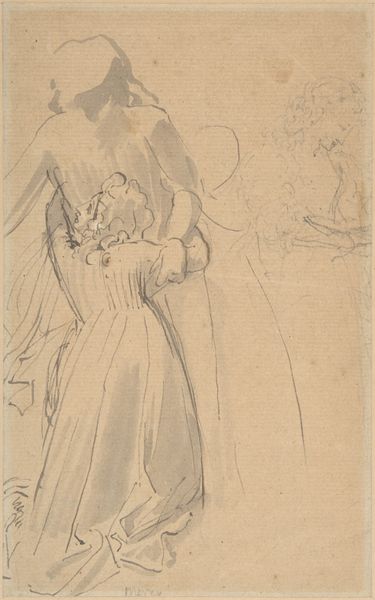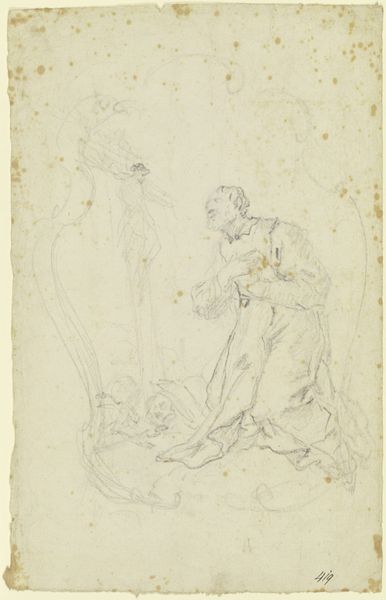
Harpespillende dame. Bag hende en turbanklædt mand 1768 - 1771
0:00
0:00
drawing, ink, pen
#
portrait
#
drawing
#
ink drawing
#
pen sketch
#
ink
#
pen
#
genre-painting
Dimensions: 243 mm (height) x 185 mm (width) (bladmaal)
Curator: Let's explore this intriguing ink drawing, "Harpespillende dame. Bag hende en turbanklædt mand," or "Lady Playing the Harp. Behind Her a Turbaned Man," by C.A. Lorentzen, created sometime between 1768 and 1771. Editor: My initial reaction is that it feels like a scene caught in a fleeting moment. The light, almost hasty lines lend the whole composition a feeling of impermanence, like a dream or memory fading. Curator: Indeed, the composition’s emphasis on line and its minimalist detailing are striking. Note how Lorentzen uses varied pen strokes to define form and texture. See the delicate hatching used to give volume to the woman's dress, or the bolder lines that demarcate the figure of the turbaned man. It speaks volumes about form using very little tonal variation. Editor: But what does it say? I am drawn to the power dynamics possibly at play here. The positioning of the figures—the woman seemingly confined within the harp’s frame, overlooked by a man in a turban— evokes Orientalist fantasies common in the 18th century, positioning Western femininity alongside "exotic" male figures, often coded for domination. Curator: Your interpretation highlights crucial contextual elements! While one can't deny the presence of Orientalist tropes, seen through the man’s exoticized garb, consider also the stylistic influences from French Rococo prevalent during that period. The airy quality of the drawing and its intimate, domestic subject matter align with Rococo's focus on graceful and often idealized scenes of leisure. Editor: I recognize the formal qualities, yet cannot disregard how easily these "graceful" scenes perpetuated inequalities. Even the woman's act of playing music becomes a sort of performance viewed, consumed even, by the male gaze in the background. Curator: Perhaps there is indeed a dual reading. While visually, the artist may be using compositional methods influenced by the prevailing artistic climate, culturally and politically, we, now, have an ability to question narratives of identity and authority represented by such figures. Editor: Exactly! Appreciating it both for what it is and understanding the discourse it enables... Curator: An ever changing discussion of artistic representation.
Comments
No comments
Be the first to comment and join the conversation on the ultimate creative platform.

